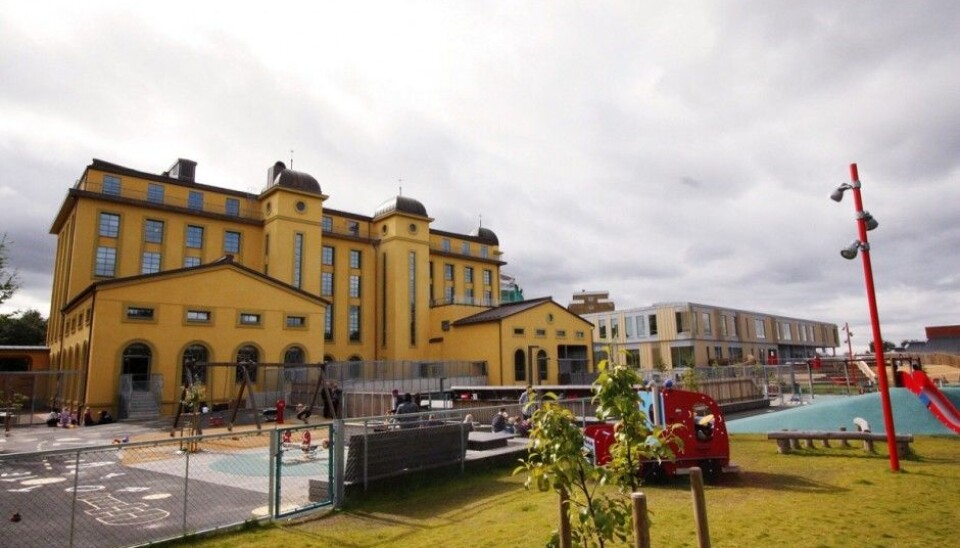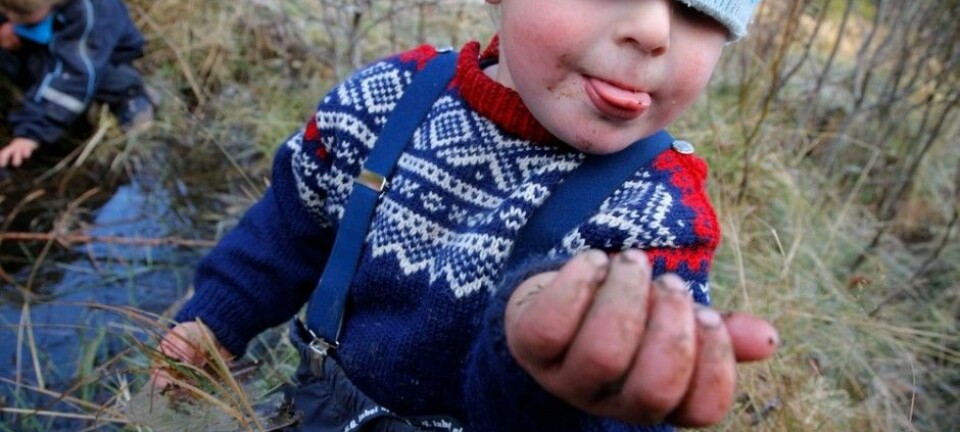
Large kindergartens rival small ones
A typical Norwegian day care will have from 30 to 40 children. But newer ones can accommodate up to 500 pre-school kids. Too big? Size is not a decisive indicator of the quality of a kindergarten, according to a recent report.
Size is not the factor which determines whether the quality of a kindergarten is good or poor, according to researchers at the independent research enterprise, Fafo.
Large kindergartens are different than small ones, of course, and they have to be divided into many sections or units. Moreover, the personnel need to be more concerned about good organisational schemes than their colleagues in small kindergartens.
But large kindergartens that excel in their services can offer children more diversity and a higher level of professionality.
Advantages of large kindergartens
“The main conclusion was that size is not the deciding factor for kindergarten quality,” says Beret Bråten, a researcher at Fafo in Oslo.
“Size plays along with factors such as organisation and leadership. Largeness is important inasmuch as it puts tougher demands on management and leadership than a small or medium-sized kindergarten.”
“We see that large kindergartens can have a number of advantages. They can be more flexible, have wider opportunities for adapting to the children and their parents, and they can accommodate staff with special responsibilities and skills. All in all, we found many such advantages among big kindergartens.”
Bråten adds, however, that suitable organisation and leadership are prerequisites for the realisation of these advantages.
“Large kindergartens can be really great but they can also be not particularly good.”
Security, skills and happiness
Answers about what makes a kindergarten good hinge on whom you ask.
When parents are queried, they are most concerned about how their child is doing in the here and now. Security and good care are key factors. Parents are also concerned about their child being fully seen and appreciated by the employees.
The researchers found that the employees and management of kindergartens think in longer terms; they are more concerned about what awaits the kids after they outgrow kindergarten and start school.
Kindergarten staff see that children need to learn skills and how to tackle various situations. Mastering skills brings them happiness – in the present and later down the line.
The researchers find that the kindergarten employees’ way of talking about the mastering of social skills and situations corresponds well with what the children themselves think to be core to kindergartens: play and friends.
Parents lean toward smallness
The researchers behind the Fafo study found that children and kindergarten staff share a general conclusion that kindergartens succeed in achieving their major objectives.
This applies, whether the kindergartens are large or small.
Parents who have children in small kindergartens are more satisfied than parents with kids in the medium-sized and large kindergartens. But the dividing line does not run between the large ones and the rest – it is found between the large and medium-sized ones on the one side and the small ones on the other.
The researchers interpret the satisfaction with small kindergartens as a result of the parents’ emphasis on security and care. They also see that parents tend to equate smallness with something secure, familiar and loving.
Jumbo kindergartens do not impart this immediate sense of security and familiarity. They need to prove such attributes through their practice.
More diversity in larger kindergartens
Upon finding that children can fare just as well in the big kindergartens, the researchers stress that these give the kids opportunities to participate in a wider variety of activities.
The diversity in the larger kindergartens also enables the employees to specialise more; they have more flexibility in organising their efforts to alter routines or to play on individual strengths.
The big kindergartens also have their own gymnasiums, special arts and crafts rooms and rooms for story-telling and reading to the kids.
The researchers see that when the children are given lots of space in a big kindergarten they make use of it, both indoors and outdoors.
In large kindergartens the children cultivate a broader range of friends. They are in touch with employees they know by name and ones they don’t. Such relationships come natural in larger kindergartens.
Only one percent negative
Among the over 1,500 who responded to the questionnaire, just one percent answered that kindergarten fails to provide security and happiness for their child(ren).
This means that Norwegian parents with kids in kindergartens are satisfied with what they consider the most important contributions kindergartens can provide.
A somewhat larger share of parents, however, have some doubts about how good kindergartens are at teaching their children skills.
-----------------------------------
Read this article in Norwegian at forskning.no
Translated by: Glenn Ostling

































